The Inuit of the Arctic are considered people of immense strength and courage. This is evident in their incredible story of survival in the Arctic region, which is undoubtedly one of the most unforgiving environments. In the Arctic, winters are long, dark, and intense, temperatures can get dangerously cold, and the ecosystem is very fragile and sparse. Nevertheless, it is within this challenging backdrop that the Inuit have chosen to intricately weave their cultural narrative, telling enduring stories of resilience. As you immerse yourself in the compelling narrative of the Inuits, you will discover a treasure trove of facts about their unique way of life. Here are some fascinating facts about the Inuits, that will give you a glimpse into their rich culture.
Fascinating Facts About the Inuits
1. The Inuit People

The word
‘Inuit’
translates to ‘people’ and the language they speak is called ‘Inuktitut’, although there are other regional dialects known by slightly different names as well.
©iStock.com/IPGGutenbergUKLtd
The term ‘Inuit’ broadly refers to the indigenous population of the Arctic regions, encompassing Canada, Alaska (USA), and Greenland. Historically referred to as ‘Eskimos‘, the term is now considered derogatory in many regions of the Arctic, after racist, non-native colonizers widely used it. Additionally, the misconception that it meant “eater of raw meat” contributed to negative connotations of barbarism and violence. Some mid-century anthropologists also suggested that the word ‘Eskimo’ has a connection to the Latin word “excommunicate,” implying the excommunicated ones, possibly due to the native people of the Canadian Arctic not adhering to Christianity. Given the sensitivity of the term ‘Eskimo,’ the Inuit population, especially in Alaska, now prefers to be addressed as Inuits, Inupiaq, or Yupiks. The Inuits of Canada and Greenland have their own preferred names as well. In Greenland, they refer to themselves as “Greenlanders” or “Kalaallit” in their language.
2. Inuit Resilience: Thriving in the Harsh Arctic

In the Arctic, the Inuit endure challenging conditions marked by extreme cold, expansive ice-covered terrains, and prolonged periods of darkness.
©Kertu/Shutterstock.com
A particularly fascinating fact about Inuits is their remarkable resilience. The Inuit people inhabit the Arctic region, an exceptionally challenging environment marked by extreme conditions. In the Arctic, from mid-March to mid-September, the sun never sets, earning its moniker “Land of the Midnight Sun”. Conversely, from mid-October to mid-February, the region experiences complete darkness. But the harshness extends even beyond just the unique light patterns. Temperatures in the region can plummet to frigid levels, ranging from -29 degrees Fahrenheit to 14 degrees Fahrenheit during winter months. Beneath the soil, there is a layer of land that is almost permanently frozen. In this unforgiving landscape called the tundra, characterized by its frozen nature and lack of trees, the Inuit people have thrived for thousands of years, demonstrating remarkable adaptability and resilience in an environment many would find inhospitable.
3. Inuit Cultural Regions
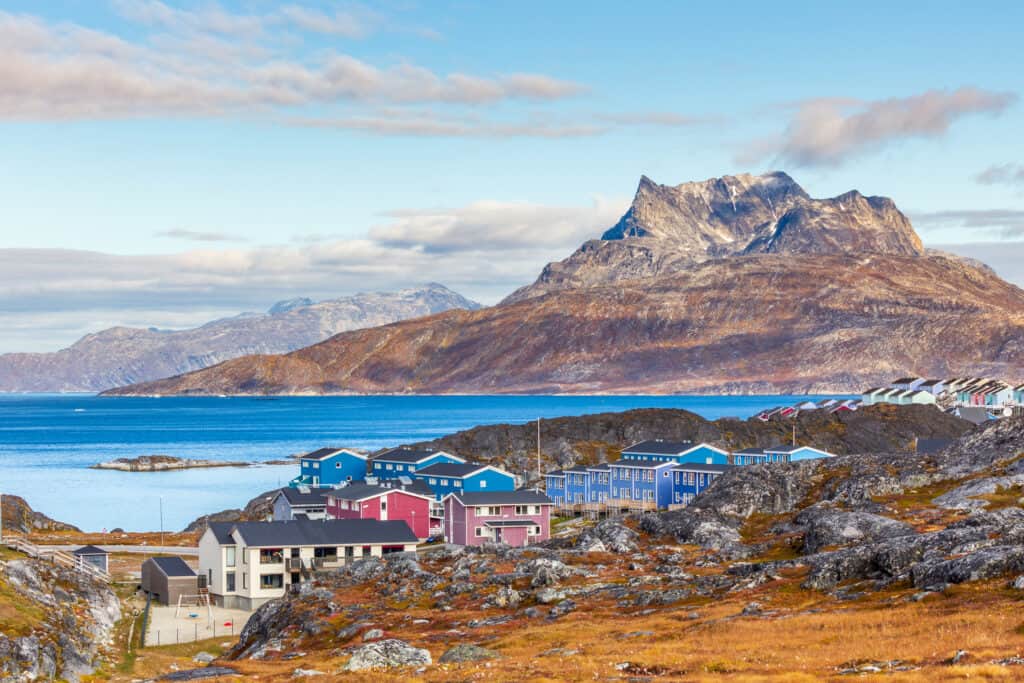
The Inuits co-manage their homelands through constitutionally protected land claims agreements established with territorial, provincial, and federal governments.
©iStock.com/Vadim_Nefedov
The Inuit population has its own cultural and geographic designations. In Canada, the cultural region is known as the “Inuit Nunangat”. The Inuit Nunangat comprises four regions: the Inuvialuit Settlement Region (northern Northwest Territories), Nunavut, Nunavik (northern Quebec), and Nunatsiavut (northern Labrador). Encompassing approximately 35 percent of Canada’s landmass and 50 percent of its coastline, it includes 53 communities. The majority of Canada’s 65,000 Inuit reside in the Inuit Nunangat. A quarter of the population, however, lives outside its borders, with around half of them in urban centers
Some Inuits also choose to live in extremely isolated regions as it allows them to preserve their unique way of life. In the Inuit Nunangat, for example, over a third of the communities are only accessible by air year-round and by a combination of air and sea during the summer months.
4. Inuit Houses

Traditional Inuit dwellings, known as “igloos” are ingenious snow and ice structures designed to provide warmth and shelter in extreme Arctic conditions.
©zeelbervarg/Shutterstock.com
Another best-known feature of Inuit life is their winter snow house, known as the igloo. Before introducing modern, European-style homes, Inuits throughout the Arctic lived in igloos. These igloos were of two types: the smallest was built for temporary shelter during winter journeys or hunting expeditions. The larger main dwelling, on the other hand, was usually spacious enough to house two or more families.
In the arid western region near the Mackenzie Delta and the southern coast of Labrador, families typically utilized a semi-subterranean wood-frame structure covered with planks and ice-glazed sod as their traditional winter dwelling. During the warmer months, Inuits inhabited either conical or dome-shaped tents covered with seal or caribou skins. In addition to their dwellings, certain groups also constructed sizable snow or skin-covered structures known as ‘Kashims’ for sporting and ceremonial activities.
5. Inuit Mastery in Hunting Technologies
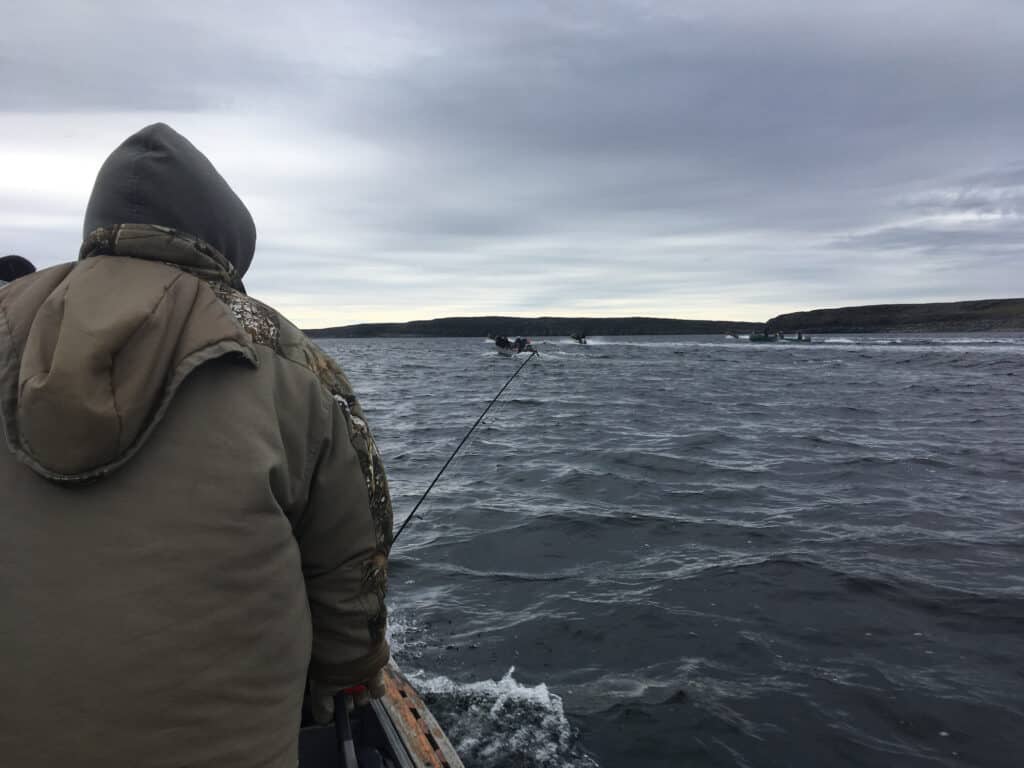
In addition to game meat, the Inuit incorporate freshwater and saltwater fish, including trout in their diet.
©iStock.com/danica dragon jacimovic
To survive the sparse Arctic, the Inuit people have excelled in developing innovative hunting technologies and strategies for marine animal hunting. Among their prized marine catches are ringed and bearded seals, polar bears, narwhals, beluga whales, and walruses. On the tundra, their hunting extends to grizzly bears, barren-ground caribou, and muskoxen in scattered locations. Primarily big-game hunters, they also occasionally diversify their diets with seasonal additions of birds and fish. They have remarkable skill in crafting weapons and fishing gear from materials like antlers, bones, wood, ivory, stone, and copper.
6. Traditional Inuit Clothing

The Inuit’s carefully tailored garments don’t just offer protection against the biting cold but also incorporate waterproof materials like sealskin to ensure that they stay dry in the icy environment.
© – License
A particularly fascinating aspect of Inuit life is their clothing. Traditional Inuit clothing is well-suited to the harsh Arctic climate, typically consisting of meticulously crafted garments made from animal hides and furs. The clothing was usually the same for all people, with slight variations across regions. The winter attire for both men and women included parkas made from caribou skins, complemented by pants for men and culottes for women. Knee-length boots, crafted from a variety of materials such as beluga, seal, and caribou skins, completed the outfits. Women liked to add a touch of personalization by using hides in contrasting colors, indicating the wearer’s gender and age.
Undergarments were crafted from pelts and soft materials such as eider-duck skins. During winter, these undergarments were worn with the hair turned inward, while in summer, the clothing primarily comprised the winter underwear worn with the hair side turned outward. In modern times, while traditional clothing persists, there is also an integration of contemporary materials and designs to adapt to changing lifestyles.
7. Traditional and Modern Inuit Transportation
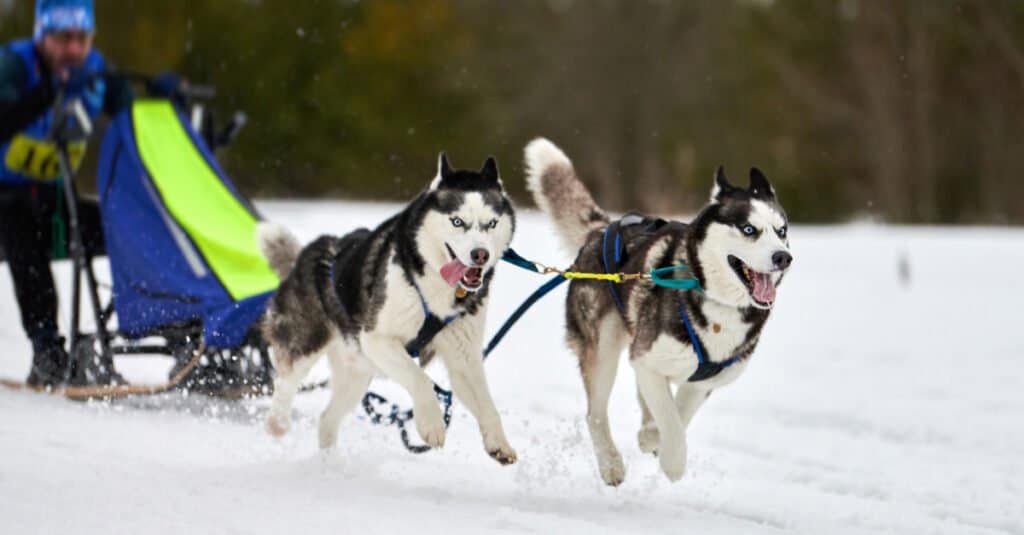
Sleds used by the Inuit people were typically pulled by sled
dogs
such as Siberian Huskies and Alaskan Malamutes, which are well-adapted to the Arctic environment.
©travelarium.ph/Shutterstock.com
The Inuits migrate with seasons, moving between different locations based on resource availability and climatic conditions. During the course of their migration, the Inuits used several means of transportation. The well-known kayak and the less familiar umiak were two crafts used by Inuits for open-water travel. Skin-covered kayaks were the choice for solo hunters, while wood-framed, flat-bottomed umiaks were used for both transportation and hunting larger marine mammals. The Umiaks were capable of carrying up to ten people and four tons of cargo and had tough beluga or walrus hide coverings that made it puncture-resistant.
During winter, sleds became the primary mode of travel. Crafted from materials such as wood, bone, or antler, these sleds were ingeniously designed to navigate the icy terrain.
8. Inuit Society and Lifelong Partnerships

Sharing was a significant aspect of Inuit society and the Inuits had specific rules for sharing the spoils of collective hunting and fishing.
©Prachaya Roekdeethaweesab/Shutterstock.com
In Inuit society, akin to the Indigenous people of the Subarctic, the foundation was the nuclear family consisting of a father, mother, children, and grandparents. However, due to the extreme weather conditions and limited food resources, families often formed small bands to facilitate cooperative activities like fishing, hunting, and gathering. Inuit communities also traditionally embrace a collective responsibility for raising children. Children are included in daily activities and responsibilities from a very young age. They are also taught essential survival skills in the challenging Arctic environment from very early on.
Another fascinating fact about Inuit society was the formation of lifelong partnerships between men. In these partnerships, individuals shared resources, and occasionally, even wives. The arrangement ensured mutual support and protection between partners. This cooperative lifestyle was essential for survival in the challenging Arctic environment.
9. Inuit Entertainment: Storytelling, Dance, and Music
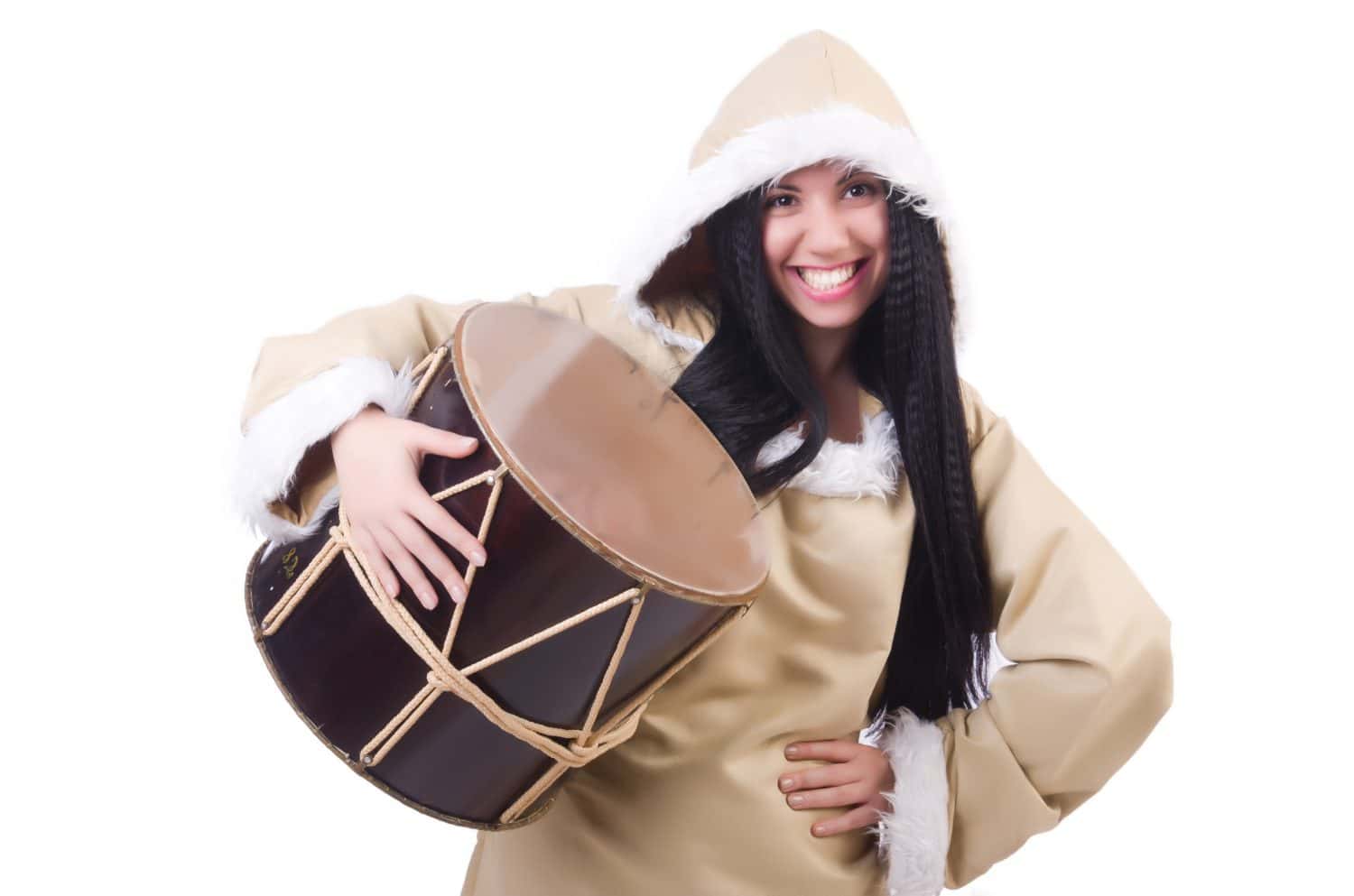
Storytelling, throat singing, drum dance feasts, and modern artistic performances encompass Inuit entertainment.
©Elnur/Shutterstock.com
Inuit entertainment often centered around storytelling, dance, and music. Storytelling was a crucial part of passing down traditions, history, and cultural knowledge. Before the intrusion of the Europeans, the Inuits embraced a very active ceremonial life. They constructed special areas or igloos for rituals and celebrations. The drum dance feast was a common ceremonial practice. The drum dance featured men dancing in turns while beating a large tambourine-like drum. This was often accompanied by a personal song dealing with the singer’s life or sometimes even satirical of others. It, therefore, provided an outlet for hostile feelings in a public forum.
Throat singing, also known as katajjaq, is another unique and traditional Inuit form of entertainment. It involves two performers, usually women, who stand face to face and create a captivating vocal duet. The Inuits also liked to engage in games and sporting contests. The Blanket Toss is a game that is often played at Inuit festivals and other celebrations. They have a great fondness for demonstrations of strength and enjoy wrestling and boxing matches in particular.
10. Inuit Beliefs and Taboos
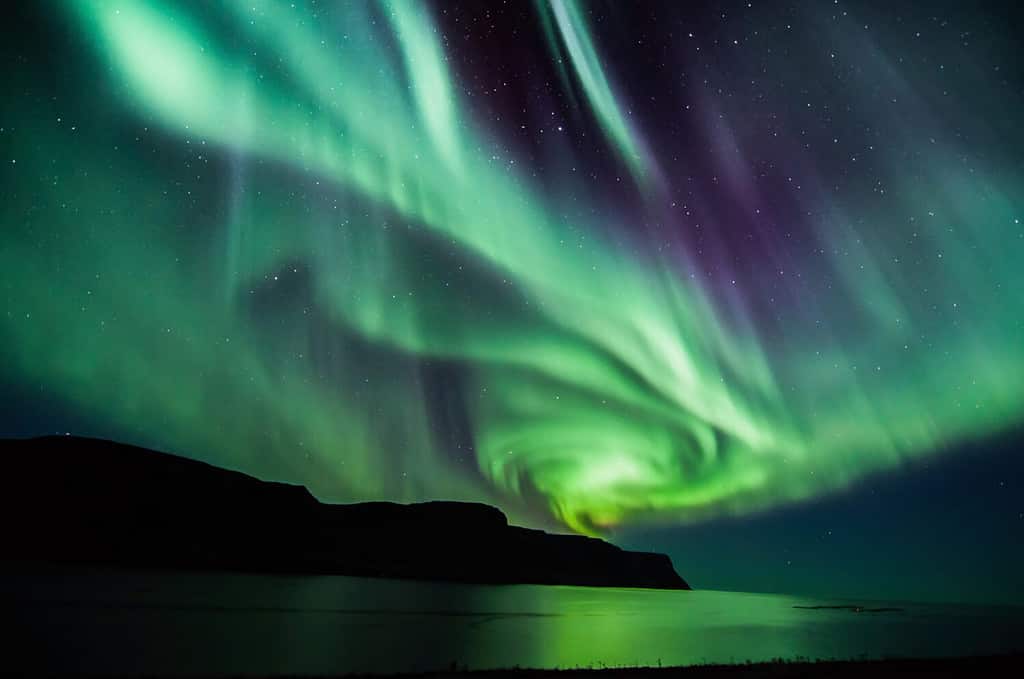
A popular myth among the Inuits was that you could not whistle, wave, or sing under the Northern lights as this would attract the lights closer.
©Mike-Hubert.com/Shutterstock.com
The Inuits shared the belief that everything was inhabited by a soul or spirit. This was a common belief among most Native groups. When fishing and hunting, therefore, many rituals and taboos were observed so as not to offend the souls of the animals and fish. Shamans typically acted as intermediaries between the community and the spirit world. Usually, bad weather, illness, or bad hunting were all attributed to displeased spirits.
Another belief among Inuits was that spirits are passed on through names. In Inuit tradition, names are more than mere identifiers. They carry significant spiritual and familial connections. It is believed that the spirits of deceased relatives or community members can be passed on to newborns through the giving of names.
11. Inuit Inventions
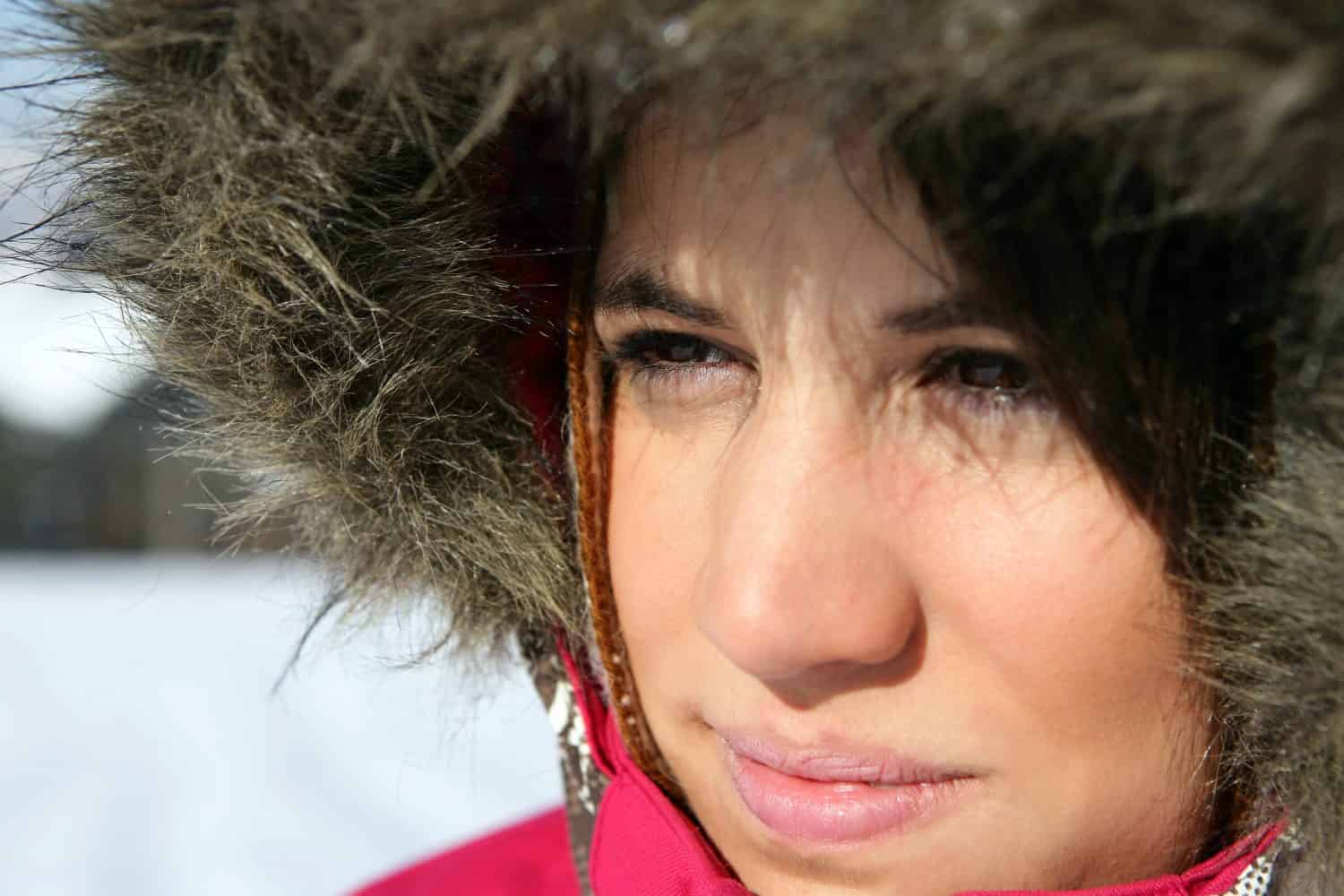
The design of modern snow jackets is also said to be influenced by traditional Inuit parkas, which were designed to provide warmth and protection in cold Arctic climates.
©Phovoir/Shutterstock.com
The Inuits have several inventions to their credit. From the light, maneuverable kayak to the larger umiak, dog sleds to traverse the snowy expanses, and the iconic igloo, many of these inventions and technologies were developed to adapt to their challenging environment. Apart from these well-known inventions, other notable Inuit inventions include the ‘Inuksuk’. The ‘Inuksuks’ are stone structures that are erected to mark hunting grounds and places of reverence, guide travelers, and sometimes even indicate the presence of food caches. Another remarkable invention of the Inuits is the harpoon. The harpoons are specialized tools developed by the Inuits for hunting marine animals like seals and whales.
The Inuits are also credited with crafting snow goggles from materials like bone, wood, or antler. These snow goggles helped protect their eyes from the glare of the sun on the snow.
12. Inuit Art
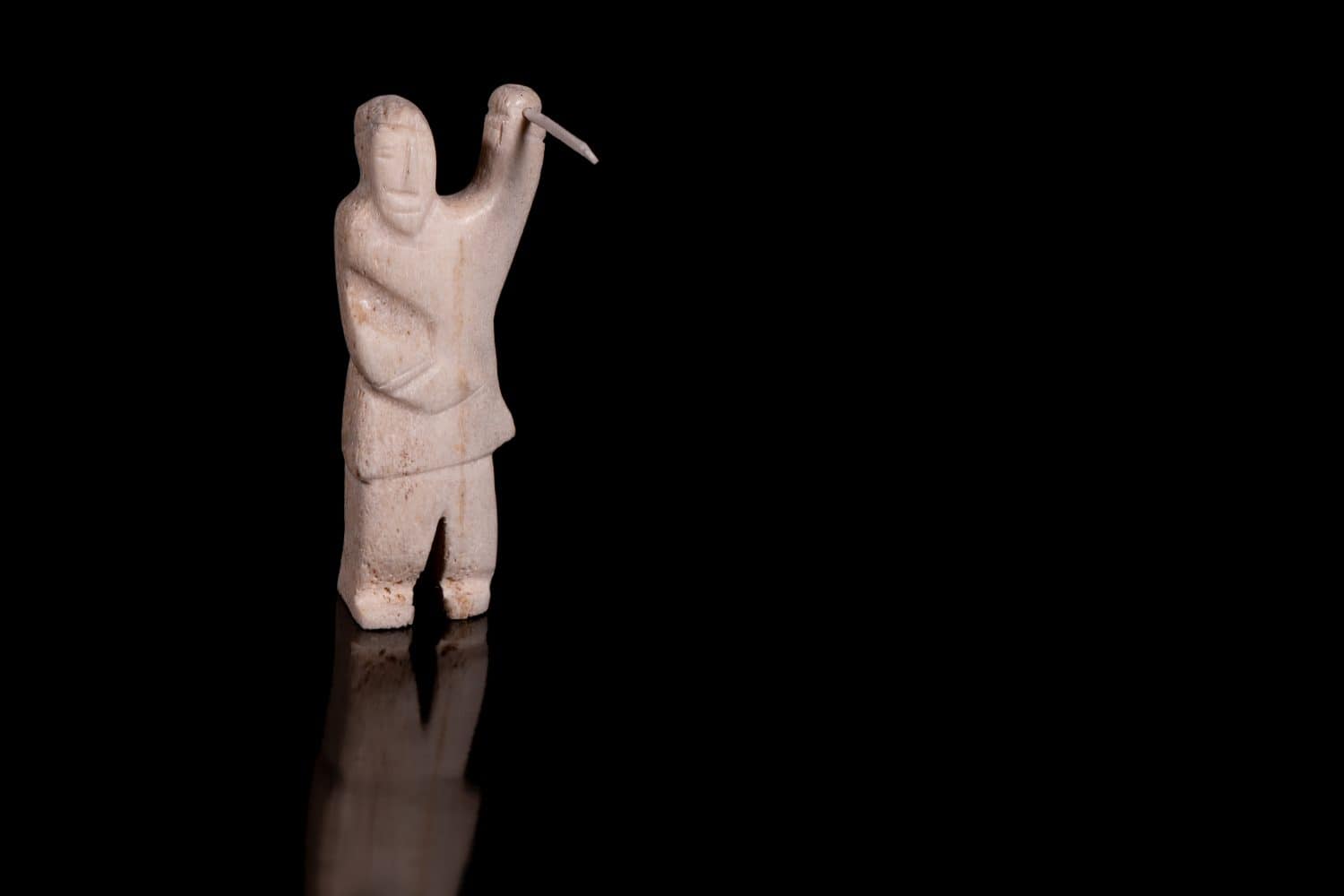
Art is an important source of economic support for many Inuit communities.
©Petr Kahanek/Shutterstock.com
Another fascinating fact about the Inuits is their art. Inuit art has a rich history that spans thousands of years. Their art represents their way of life and is created using simple, everyday objects. Inuit art also encompasses a wide range of forms, including sculptures, carvings, prints, drawings, and textiles. Carvings from soapstone, bone, and antler are particularly notable and have helped preserve their cultural stories. Cape Dorset, located in Nunavut, stands as a prominent center for Inuit art. About one in five of Cape Dorset’s residents are actively involved in artistic pursuits.
The photo featured at the top of this post is © iStock.com/IPGGutenbergUKLtd
Thank you for reading! Have some feedback for us? Contact the AZ Animals editorial team.






